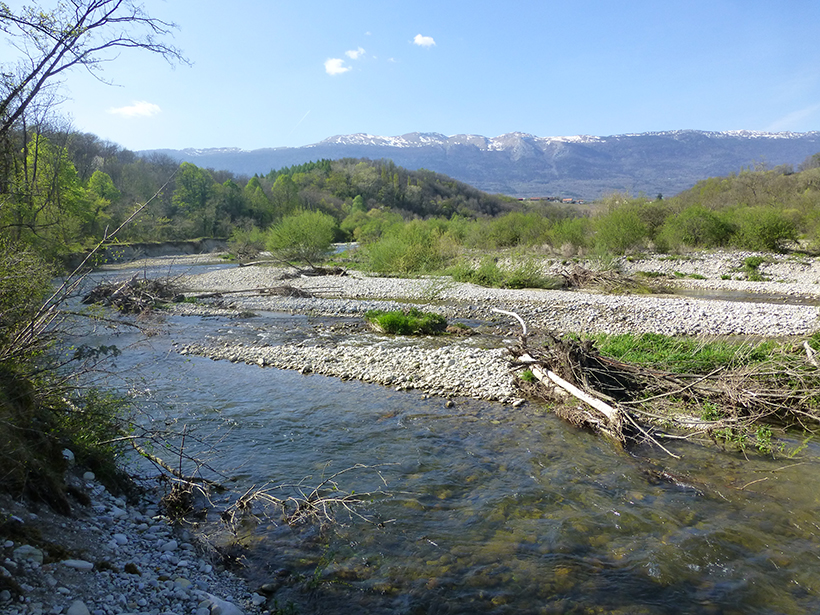Source: Journal of Geophysical Research: Earth Surface
From a single broad channel of rushing water to a braided network that’s split into many narrow passages, rivers come in a variety of shapes and sizes. Scientists have shown that processes such as water flow, sediment transport, and vegetation all affect a river’s shape. Here Bätz et al. show that one more phenomenon can be added to the list: groundwater behavior.
The link between groundwater behavior and a river’s morphology is rooted in vegetation. Plants can slow erosion by rivers and assist river morphological evolution by trapping and stabilizing sediments. Thus, plant growth may limit channel dynamics and therefore its width. All in all, this has been defined as the capacity of plants to “engineer” their river systems.
But groundwater is necessary for vegetation to take root. So the team set out to test whether they could see a direct influence of groundwater behavior on changes in a river’s geomorphic activity. They looked at a 2-kilometer reach of the Allondon River system, located to the west of Geneva, Switzerland. Historical aerial images allowed the team to reconstruct the morphological evolution of the reach and associated development of the vegetation cover over the last century. They compared these differences in morphological changes along the river to the dependence of vegetation growth rates (based on tree ring width measurements) on groundwater and river flow estimates.
The team showed that downstream, where the groundwater elevation is close to the surface and stable, vegetation quickly takes hold, thus increasing channel stability via its “engineering” capacity. River channel width decreases. But upstream, where groundwater elevation is deep and variable, vegetation takes its time, causing the channel to remain unstable for longer and allowing for a more dynamic and wider channel.
Thus, the authors argue that groundwater variability has an important—and previously overlooked—role to play in a river’s morphology. Understanding these complex, often hidden, connections underlying river behavior is crucial in order to promote economically effective and environmentally friendly river reach and land management. (Journal of Geophysical Research: Earth Surface, doi:10.1002/2016JF004009, 2016)
—Shannon Hall, Freelance Writer
Citation:
Hall, S. (2016), Groundwater: A hidden influence on river shape, Eos, 97, https://doi.org/10.1029/2016EO062169. Published on 02 November 2016.
Text © 2016. The authors. CC BY-NC-ND 3.0
Except where otherwise noted, images are subject to copyright. Any reuse without express permission from the copyright owner is prohibited.

